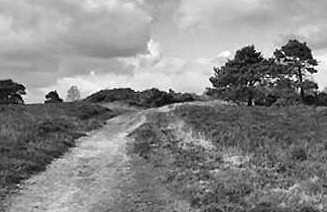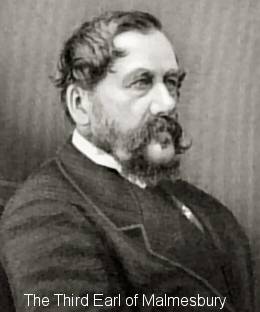|
Heathland origins
Before Victorian builders began to develop it, Winton
was simply heathland on the western edge of the New Forest. The
ancient area was known as "The Liberty of Westover"
and was part of the Manor of Christchurch. Westover means "west
of the Stour".
Bleak and barren
 Three
hundred years ago Daniel Defoe, writer of Robinson Crusoe,
described it as "sandy wild and barren country". In
1782 John Byng, Viscount Torrington called it "bleak heathy
country". In 1795 the Duke of Rutland said "On the barren
and uncultivated heath where we were, there was not a human being
to direct us. We were not however mistaken, as after a most dreary
ride, we found ourselves on the high road, from whence we looked
down upon Poole and its environs". Three
hundred years ago Daniel Defoe, writer of Robinson Crusoe,
described it as "sandy wild and barren country". In
1782 John Byng, Viscount Torrington called it "bleak heathy
country". In 1795 the Duke of Rutland said "On the barren
and uncultivated heath where we were, there was not a human being
to direct us. We were not however mistaken, as after a most dreary
ride, we found ourselves on the high road, from whence we looked
down upon Poole and its environs".
Divided in four "tithings" of Muscliff,
Muccleshell, Throop and Holdenhurst, the "Liberty of Westover"
was inhospitable, but did support several farms and small settlements.
Of the four original tithings, Muccleshell has now disappeared
and is now part of Throop. Ensbury Park Road, incidentally, used
to be called Muccleshell Lane. Muccleshell was variously spelled
as Maccelshell or Muggleshell
Winton, by the way, was an ancient name for Winchester
and rather confusingly there was a Winton in Tudor times - but
quite a few miles away. Its name changed and it ended up as Winkton.
Maps
Map
of the area in 1791
Map
of the area in 1826
Splitting up the land
A major force of change was the 1802 Christchurch
Enclosure Act which required commissioners to divide up and enclose
areas of common land - many of these parcels of land were duly
sold off. This caused considerable consternation among local people
who had used common land for grazing and the ancient right of
"turbary" - cutting peat which they used as fuel. Led
by a local farmer, they raised a petition and areas of common
land were left for turbary and cattle grazing.
While landowners decided what to do with their newly
acquired real estate, the first roads were established over former
heathland tracks. The old track from Iford to Redhill was rolled
and covered with gravel to become what we know know as Wimborne
Road. At various times it was known as Muscliffe Road and Richmond
Hill Road. The other main route on the edge of the future Winton
was a mediaeval track from Poole which became Wallisdown Road
and Talbot Road. Down on the coast, the very first foundations
of Bournemouth were beginning to be laid.
The familiar name of Malmesbury
 One
of the principal landowners of the area that was to become Winton
and Moordown was the Earl of Malmesbury, who also held the title
of Viscount Fitzharris. If you own a house you are likely to find
his name, or that of his estate, in the deeds. One
of the principal landowners of the area that was to become Winton
and Moordown was the Earl of Malmesbury, who also held the title
of Viscount Fitzharris. If you own a house you are likely to find
his name, or that of his estate, in the deeds.
Starting life simply as James Harris, he was one
of the great diplomats of the 18th century. He thwarted a Spanish
attempt to steal the Falkland Islands and represented England
at the court of Russia's Catherine the Great in St Petersburg.
He even found himself embroiled in the bloody events of the French
revolution. As a reward he was created Earl of Malmesbury and
Viscount Fitzharris. Shortly afterwards he set about buying the
land that was to become Winton. It wasn't far from home. His family
seat was Heron Court (now known as Hurn Court).
The second Earl of Malmesbury (1788-1841)was mainly
interested in hunting and fishing. He kept copious diaries and
records of his exploits. They give an insight to the area as it
was then. One says that "every variety of British bird, even
the rarest, is in the small museum at Heron Court, all having
been killed within five miles of my house".
There was certainly plenty of wildlife in the neighbourhood.
And despite the second Earl's apparent attempts to wipe it out,
there still is.
The third Earl of Malmesbury was a statesman like
his grandfather. He rose to become Foreign Secretary and worked
with Benjamin Disraeli.
The family name and its associations live on in
Winton through property deeds and road names like Malmesbury Park,
Fitzharris Avenue and Heron Court Road.
Winton Rec was presented
to the community by the Earl of Malmesbury just over a hundred
years ago, about the time when Malmesbury Farm disappeared under
Alma Road and a development which was to become Winton's
first cinema.
|